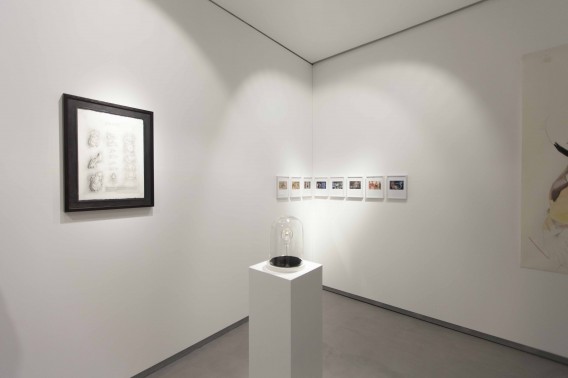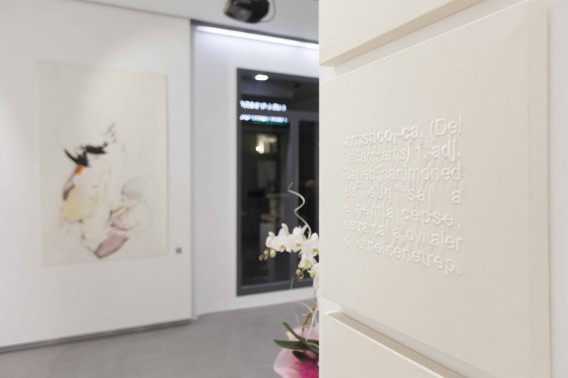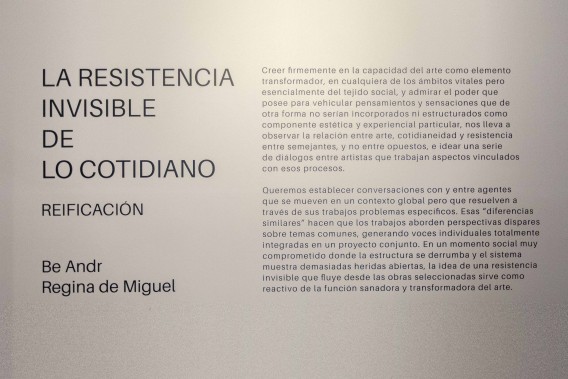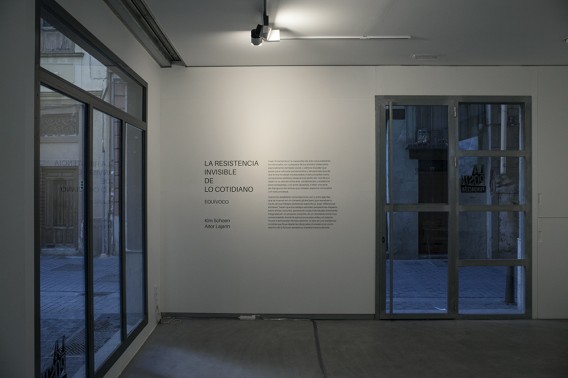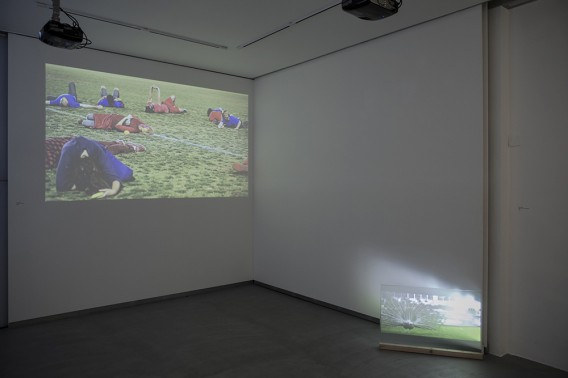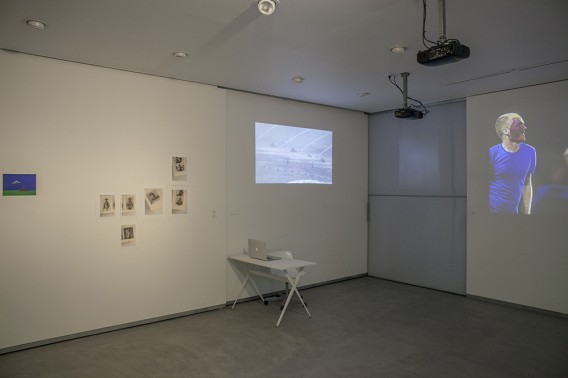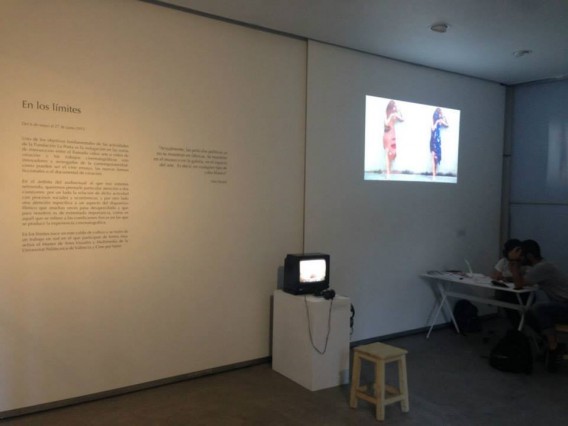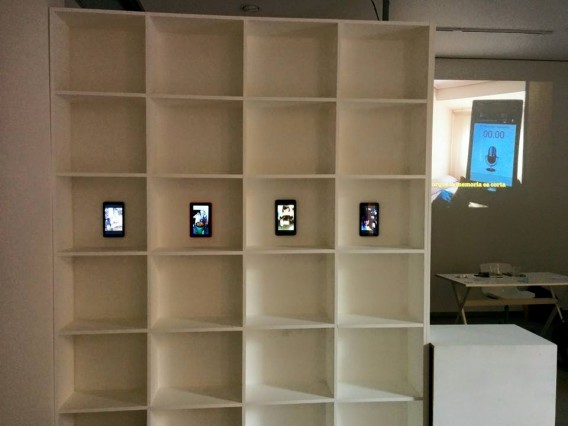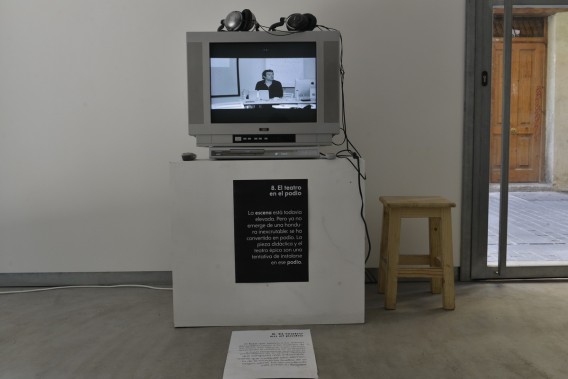When you have completed the first season of La Posta Foundation (October 2014 – June 2015) seems time to take stock of what happened.
We started this season —and thus inaugurating the exhibition space of La Posta Foundation—, the exhibition “The Inverted Classroom. Pedagogical strategies and artistic practices from sexual diversity”. This is an exhibition result of an agreement of collaboration with the International Conference on Arts Education and Sexual Diversity (EDADIS), held in Valencia on 13-14 November 2014, organised by the University Institute of Creativity and Educational Innovation of the University of Valencia. It was part of the Congress, with a prominent role, the project FIDEX Research Group, Miguel Hernández University, Altea: Inverted Classroom. Pedagogical strategies and artistic practices from sexual diversity. Maria Tinoco curate the exhibition. As all information on this exhibition is on this website, we refer to it. Currently noting that it was pictures attached to matter, even built with itself, so that the images are inseparable from the object that sustains them. Also refer to a specific topic, in this case sexual identity and gender identities built around it, and how these issues are taken into account in arts education.
Later, we enjoyed four months of the exhibition “The Invisible Resistance of Everyday Life”, which was presented in two parts: Part One “Reify”, with works by Be Andr (“Disruption: Go Ogle Me + 90 degree I” ) and Regina de Miguel (“Knowledge Never Comes Alone”); and the Second Part “Equivoque”, with works of Kim Schoen (“Have You Never Let Someone Else Be Strong?” “Second Oldest Amusement” and “Wet Technology”) and Aitor Lajarín (“The Pond” and “Emperor”). Juan Fabuel curate the exhibition. With this round of exhibitions there was a remarkable change in relation to the issues we have referred to, because an important part of the images shown are based on electronic files. This is an issue of enormous importance to us because impact on the maximum interest issues, such as those relating to how the dissemination of the work occurs; and related to this, the validity of concepts like copy original work and even going beyond the distinction between production and reproduction. On the other hand, apart from theoretical considerations, the fact is that we saw the images projected on the wall are pure imagery, pure light. This idea was particularly pronounced in the form of exhibition of the work of Kim Schoen “Second Oldest Amusement”, projecting the image on a translucent glass re-projected at an oblique light beam on the wall.
The question of de-objectification of the work is enormous importance to us. Note, that the phenomenon could be seen even in the work of Be Andr “Go Ogle Me”. Although it is a work that materialised in a vinyl attached to one wall of the exhibition space, in reality it is a work that is located in an electronic file. It is the electronic file in which the information vectoralized, where the image exposed to the visitor experience is located. This reality is accentuated by the futility of support material used for playback (vinyl adhered to the wall), which after the display time disappeared. What remains is the electronic file in which the work conceived by the artist is contained. We have said before that this is an important issue for us, because regardless of issues relating to the production of the work, affects the process of disclosure of it. As a result of the form of embodiment of the work adopted, there is no trace of traditional concepts as original work, understood in the sense of the first materialization of it. These issues to which we are referring are relevant in relation to the processes of disclosure, distribution and, where appropriate, in connection with the marketing of the work. Even the second part of the work of Be Andr “90 degree I” (the “I” Latin lying in the middle of the exhibition space), affects such structural issues art system, as this work is an offer by the artist so that visitors can sit for close observation of “Go Ogle Me”, and also that, looking in the opposite direction, to experience the film Regina de Miguel “Knowledge never comes alone”. It is a fact of enormous structural relevance, to the point that the idea was taken up by La Posta Foundation for the exhibition “The Invisible Resistance of Everyday Life II: Equivoque” now formalized in a bank placed expressly for viewing videos. The issue we are talking about is not a trivial matter. This is an issue that has not yet been satisfactorily resolved in the space of art that moves between having the visitor standing while watching the corresponding video, or reproduce the conditions of the camera obscura for viewing films.
As you noticed the attentive reader, in this summary of the activities in La Posta Foundation in this first season, we are following the scheme raises José Luis Brea in Three eras of the image. Image-matter, film, e-image. In this case, as in the text of Brea, without chronological list of the exhibitions, and the emphasis on the changes that have occurred in the ways to sustain the work, both materially and technologically, involving the adoption an approach of Darwinian evolution that takes implicit the idea of superiority of some forms regarding their predecessors in time.
The process of dematerialization of the work on display has worsened with the third of the scheduled activities: “In the limits”. Composite, like the above, two distinct parts with their little peculiarities. The first part sponsored by the Master of Visual and Media Arts, Polytechnic University of Valencia, and the second part sponsored by Film to Come. In the case of “In the limits”, all the works on display have been videos. Presented in different ways, sometimes by light projection and other on a monitor connected to a media player.
However, this sample of work has been presented as “a set of cinematographic activities”. The use of the term cinematographic seeks to emphasize the processes of both production than distribution, exhibition and reception of images (and not as a reference to the themes addressed). We know that the concept of cinema has been inextricably linked with that of the device, after the seminal work on the subject of Deleuze: The movement-image and The time-image. Film studies.
The accent is placed on the processes, while assumed the own proposals of essay film the creative documentary or processual cinema praxis Miguel Ángel Baixauli (that is at once who has coordinated this whole set of cinematographic activities “In the limits”). This a waiver traditional narrative heiresses of the novel ―which puts us within the limits of cinematograph― while brings us to the field of video art and video creation with their frame of reference in the field of fine arts. In the area of intersection, it has its field of action of “In the limits”.
Closely related to emphasize processes is the indication of participation as one of the basic items in contemporary creation. This also ties in with a well-established feature in the cinema, as is their ability to generate public sphere. Be seeking active participation in production, distribution and exhibition, from those receptors were previously only images acting at this point in correspondence with the technological resources at our disposal, which have become the recipients of images producers and distributors of these in increasing numbers.
In this context, during the two months that has lasted “In the limits”, they have been seen during the first half, sponsored by the Master AVM (in May), the work produced by students past and present of the Master, who also participated in the Seminar on Processual Cinema held in La Posta, where they had the opportunity to see first hand the process of producing a film in progress as is “Seeing is not talking”, whose protagonist Miguel Morey expressly invited to give a lecture during the seminar, which was recorded for inclusion in this film (converting the exhibition space of La Posta on a film set). In total the works of: Yas, Lucía Montero, Art Group Manusamo&Bzika, Germán Torres, Patricia Cadavid, Alejandra Bueno, Juan Carlos Rosa Casasola y Nacarid López. During the second part of “In the limits”: “Public to come,” sponsored by Cinema to Come (in June), have seen works produced by the participants at the Third Conference of Cinema to Come held in Las Naves CCC during the months of February and March 2015. Some of them made specially for the occasion. In total the works of: Episode 1: Damià Jordà, Pepa L. Poquet, Mabel Fuentes, Paula Giménez y Lola Bataller Alberola; Episode 2: Alfonso Legaz, Álvaro Yebra, David Cantarero Tomás, Octavio Guerra Quevedo, Pau Berga, Rosa Esteso y Mario Zamora.
Thus ends the 2014-2015 season, with the firm intention that the activities initiated have continuity, and in that sense are not reduced to mere events, however important they may be, but that they are framed in a historical time, while acquiring referential character.


